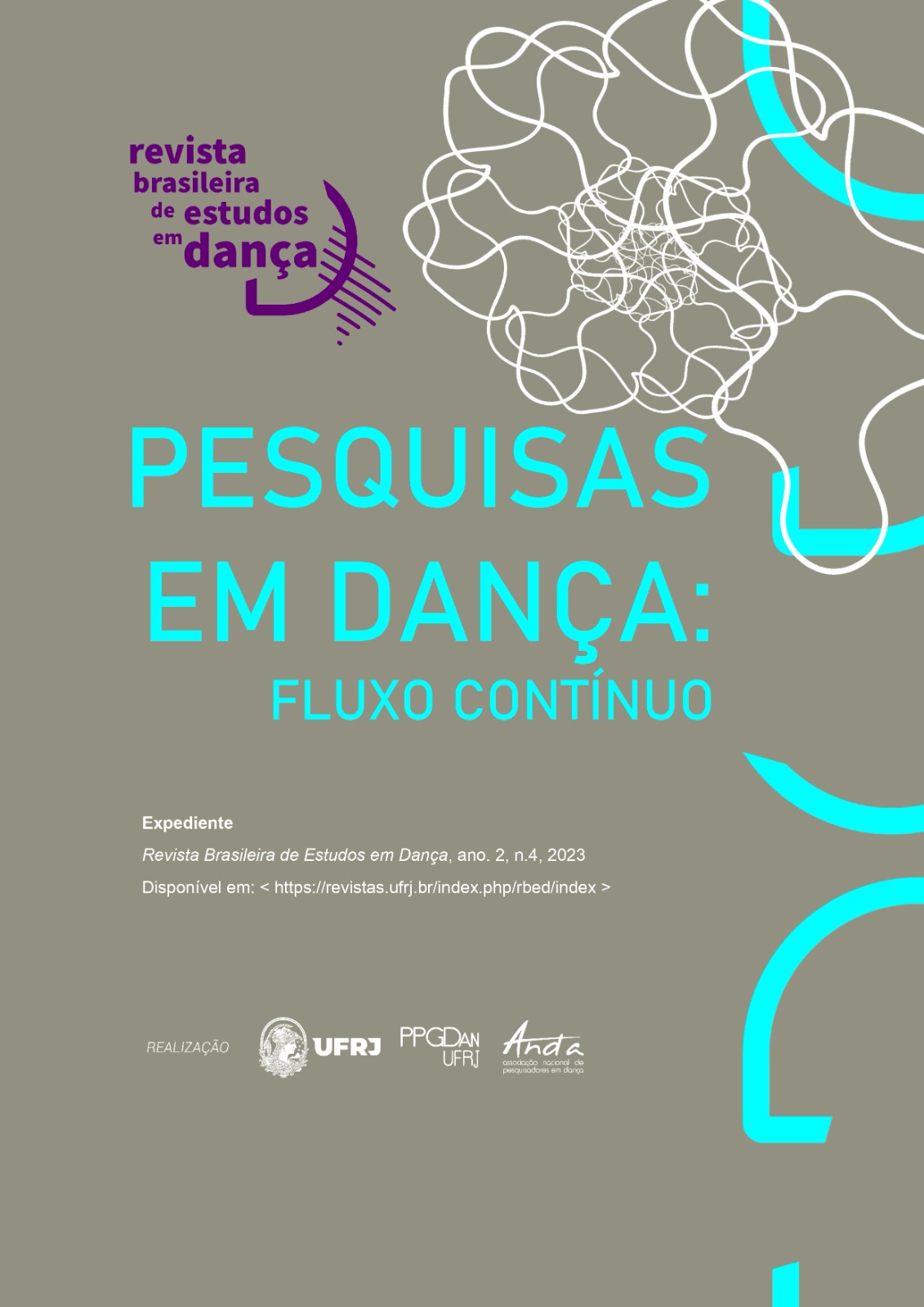From the clay floor to the stage: the dramaturgy of tap dancing at “Coco of Tebei"
DOI:
https://doi.org/10.58786/rbed.2023.v2.n4.62338Abstract
In many manifestations of Brazilian popular culture, we find different ways of making sounds with the feet. It accompanies dance, singing, and music in an inseparable continuum, most of them are Iberian, African, or indigenous origins. Among the elements of dance, singing, and music that make up the narratives found in these manifestations, we propose an articulated examination of the troupes of Coco of Tebei from Pernambuco due to their strong characteristics in Brazilian tap dancing and the uniqueness of not using musical instruments during their performance. This tradition of more than 100 years awakens our interest in its indigenous influences as an elaboration in the compositional process articulated with studies of Afro-Amerindian performances. From the troupe techniques used by the players and the dancers' varied tap dances in cultural events, several codes focus on the action of those who perform these sound movements, at which moment they are part of the choreographic construction. Furthermore, the “ground” that supports tap dancing techniques can vary from clay to stage, from party to festival and this alters its context of dramaturgical analysis between important and sometimes “invisible” aspects to the spectator where these dances are practiced. In this way, we will be attentive to the scenic work that starts from tap dancing research with the perspective of understanding the paths and choices that take it from the “clay floor” to the “stage floor".
Downloads
References
AYALA, Maria Ignez. Cocos do Nordeste. Na pisada dos cocos : circuito 2017/2018. – Rio de Janeiro : Sesc, Departamento Nacional, 2018. 74 p. : il. ; 28,5 cm. – (Sonora Brasil).
GLOBO. Missão Mario de Andrade. Available in: https://oglobo.globo.com/cultura/livros/missao-mario-de-andrade-uma-viagem-pela-cultura-popular-inspirada-nas-pesquisas-do-escritor-16495442. Acessado em: 13 de jun. 2023
SAMBA DE COCO: a história da família que faz do ritmo a própria natureza do Brasil. Pedro Stropasolas. Brasil de Fato. Revista eletrônica. Recife, 2022. Disponível em: https://www.brasildefato.com.br/2022/08/01/samba-de-coco-a-historia-da-familia-que-faz-do-ritmo-a-propria-natureza-do-brasil. Acessed in: June, 1st. 2023.
SANDRONI, Carlos. Cocos do Nordeste. Os sambas brasileiros : diversidade, apropriação e salvaguarda / org. Márcia SantʼAnna. – Brasília, DF: Iphan, 2011. 144 p.: il. color.; 24 cm. – (Anais; 1)
SIRINO, Salete Paulina Machado. Mario de Andrade: mais que um turista aprendiz, um político cultural. Revista Educação e Linguagens, Campo Mourão, v. 1, n. 1, ago./dez. 2012
TEBEI: Direction: Gustavo Vilar, Hamilton Costa, Paloma Granjeiro e Pedro Rampazzo. Produção: Sambada Comunicação e Cultura. 1 vídeo (21 min 22 seg). Formato HD. CurtaDoc, 2008. Formato HD. 2008. Disponível em: https://curtadoc.tv/curta/cultura-popular/tebei/. Accessed in: Jun, 17th. 2023.
Downloads
Published
How to Cite
Issue
Section
License
Authors who publish in the Revista Brasileira de Estudos em Dança are
responsible for the content of signed articles and retain copyright.
They grant the journal the right of first publication with the work simultaneously
licensed under the Creative Commons Attribution-NonCommercial 4.0 License
(Open Archives Initiative - OAI). This feature, used for open-access journals,
allows sharing work for non-commercial purposes and acknowledges
authorship. If the text is later published in another vehicle, the author
must inform that it was initially published as an article in the Revista Brasileira
de Estudos em Dança. Therefore, even if the journal owns the first publication,
authors are entitled to publish their work in institutional repositories or on
their personal pages, even if the editorial process has not been completed.
The journal reserves the right to make normative, orthographic, and grammatical changes to maintain the language standard, respecting the authorial style.

